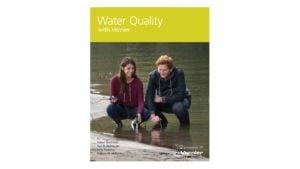Introduction
Waterways can contain microscopic pathogens with little to no obvious physical signs that they are present. Testing for pathogens can be difficult, so testing for the presence of indicator species, such as coliform bacteria, is often done instead. Coliform bacteria are not pathogenic (disease causing), but they are commonly found alongside pathogenic organisms such as those responsible for dysentery, hepatitis A, and gastroenteritis. A common source of coliforms and pathogenic bacteria is raw sewage. Coliform bacteria occur naturally in the digestive tract of warm-blooded animals, where they aid in the digestion of food. Water can be tested for three types of coliform bacteria: fecal coliforms, total coliforms, and Escherichia coli (E. coli).
The most common indicator coliform species tested for is E. coli because it is found in the digestive tract of mammals and is easy to measure. The results of E. coli tests are generally used to monitor recreational areas, storm water out falls, and drinking water supplies. Recreational and commercial waters have different acceptable levels of E. coli. The accepted standard for drinking water is that no E. coli should be present after the water is filtered or treated. Natural waters will nearly always contain some form of bacteria due to the presence of wild animals, which is why you should never drink untreated water.
In this test, you will measure the amount of E. coli. You will also measure the total count of bacteria and the total coliform count. These counts will be used to determine the concentration of bacteria.
Objectives
- Determine the quantity of fecal coliform bacteria present in a water sample from a stream or lake.
Ready to Experiment?
Ask an Expert
Get answers to your questions about how to teach this experiment with our support team.
- Call toll-free: 888-837-6437
- Chat with Us
- Email support@vernier.com
Purchase the Lab Book
This experiment is #9 of Water Quality with Vernier. The experiment in the book includes student instructions as well as instructor information for set up, helpful hints, and sample graphs and data.

